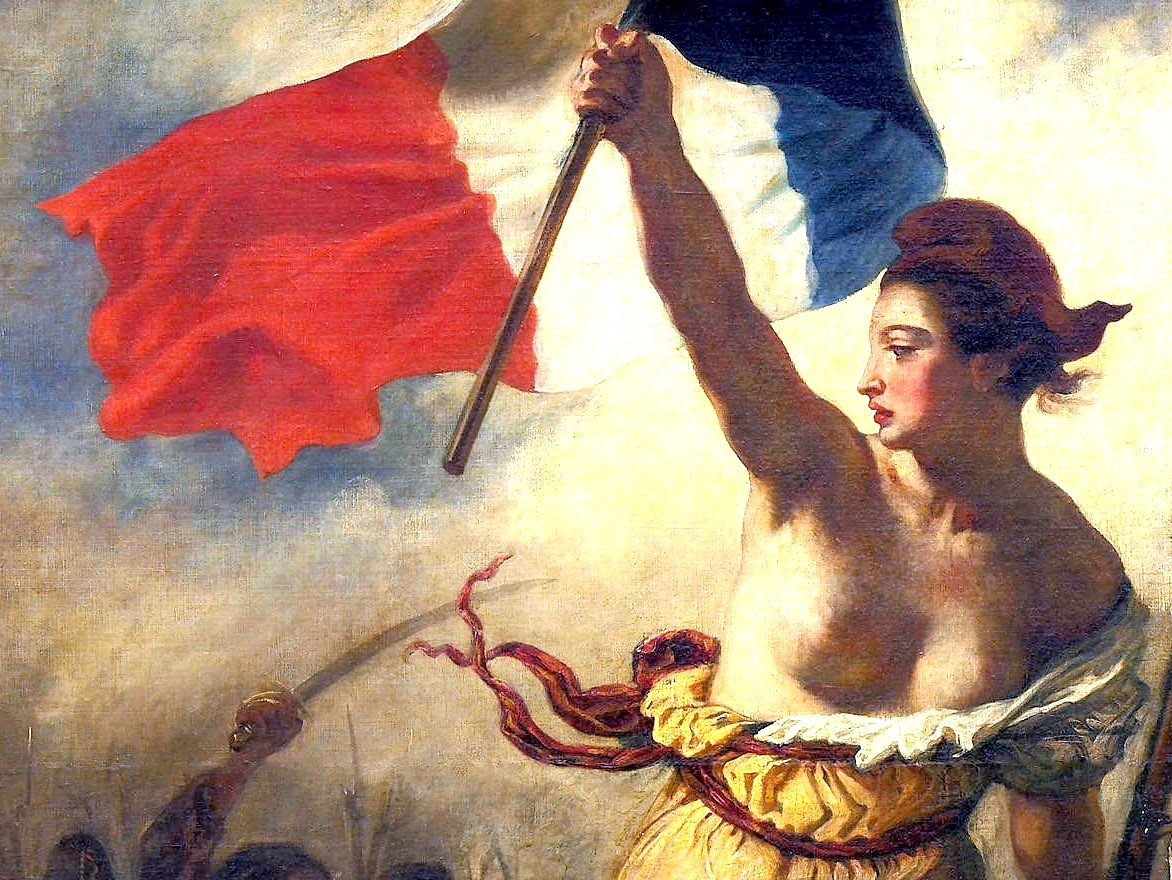
http://www.frenchmoments.eu
[In memory of Paris attacks]
The Destruction and Creation Of French Revolution*
French Revolution takes a loop process of 'destruction
and creation' and it is then followed by another 'creation
and destruction'. Its revolutionary spirit continues and
possible to extend into the future.
From the First French Republic formed during French
Revolution until the current Fifth French Republic, the
way of destruction and creation process shows the
revolutionary strength. It is also relevant to the historical
development as shown during Second World War when
France faced her survival challenges.
Can we or can we not rule out a Sixth French Republic?
We don't know. With the integration of European Union,
end of cold war, euro crisis and shift of economic power to
Asia, France and Europe at large will certainly need to
find a new role in the world stage. French Revolution,
perhaps, can add some 'destruction and creation' ideas to
a new France and a new Europe. In particularly, how
French and Europe cope with the revolutionary
movements in Asia, Africa and other parts of the world.
French revolution shows the possibility of mankind, the
destructive and creative power beyond the traditional elite
class (of nobles and priests): the Third Estate, the
women, the slaves, and the new elites(and/or middle
class). In between the destruction and creation process,
we see the emergence of citizen rights, liberty, republic
states and constitutions, new culture and new business
ideas.
We notice the end (destruction) and closing charter of
feudalism and the creation of radicalism. The radical force
can also create negative outcome like the terror in
1793/94 or positive outcome of antislavery and
independent movements outside Europe.
As a country, the French Republic also ended her own
division, the privileges, concentration of land ownership
and dues to nobles/churches. We witness the rise of
nationalism, standard measurement, creation of new
culture and common language, social relationship
(citizens and state) and even new form of business and
capitalist practice.
However, dilemma, conflicts of interest, controversies
and comprises too are the features of French
Revolution.
Women:
We see the large scale participation of women in the
revolution. Never before in history, there are so many
female participants actively joining the revolutionary force
to overthrow the traditional establishment. However, not
all in the revolutionary camp are willing to accept and
recognise women’s contribution and sacrifice and accord
them with equality.
It is controversial enough to see some free black in the
republic enjoy more equal right than women. (A similar
development also occurred earlier during the American
Revolution when black men, who joined the independent
movement, gained rights of votes before women).
Slaves
We also see the controversy and comprises on the issue
of slavery. There were free black as well as black slaves
concurrently, especially in the French colonies. The
unequal status and double standard unavoidably resulted
to another round of ‘destruction and creation’. French
colonies begun to fight for their independence.
We also notice the declaration of equal right before the
total removal of slavery trade. It shows some ‘destruction
and creation’ movements, like women rights, free black,
cannot take effective immediately. There are conflict of
interest among the revolutionary forces. Some agree but
other may not agree. Hence, they need to find a
compromise.
It is quite clear that the job of French Revolution during
the First Republic is not complete. It needs Napoleon
Bonaparte to strengthen it either militarily with a strong
army or civilly with a civil code. It also needs another
Republic to complete the unfinished job and totally
remove the emperor.
Imperial crisis:
The bigger revolutionary impact is the threat and
challenges posed to imperialism. The European powers
whether revolution or antirevolution had to face the
awakening of rights, liberty, freedom, national assembly
and constitutional government in their colonies. No
imperial powers can stop this movement. Hence,
European colonies in Central and South America begun
to break away from their imperial masters in the 19th
century. It was then followed by European colonies in
Africa and Asia in the 20th century.
However, the destruction and creation process still
continues in some parts of the world. New states emerge
like South Sudan, or states merge to form new state, like
Yemen. However, whether new states or merged states,
they continue to call themselves a Republic with a
constitution and national assembly.
Culture and economics:
With the standardised measurement and legal
administration, new thinking, culture and business
practices begin to take place. Paris was rebuilt in the
middle of 19th century (after revolutionary destruction),
new architecture, new creative thinking and innovation
also emerge. For France, her design and rich cultural
heritage have strengthened ‘soft power’ French products
and service, for example, fashion, cosmetic, arts,
paintings, foods, etc.
Conclusion
The revolutionary of the French Revolution is her spirit of
continued 'destruction and creation'. Revolution has its
bright and dark sides and the consequence can be
unpredictable and even horrific or terrific.
This is why we have different and contradicting comments
about French Revolution. We have the minimalist and
maximalist views. Countries with no impactful revolution,
like United Kingdom or Japan, continue to progress and
practice democracy, national assembly, rights and liberty.
So, one can argue revolutionary is just part of the human
development. It comes naturally to destroy old systems
and build new practice.
From the scientific point of view, it is an evolution. The
old system is discarded due to its uselessness. And new
practice needs to emerge to cope with the new challenges
and environment.
But the revolutionary force behind the big change is
extremely important. We are not sure what are the
revolutionary force behind the big change to transform
human beings into a thinking man. However, without the
revolutionary force, we are no different from other
animals.
So, how should we consider French Revolution? Is it
revolutionary enough to give a new meaning to human
beings? It depends whether you are a minimalist or
maximalist.
*class assignment for "French Revolution" course
Comments
Post a Comment